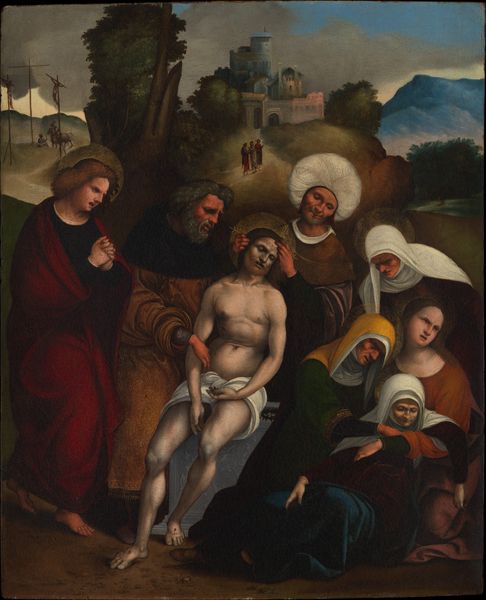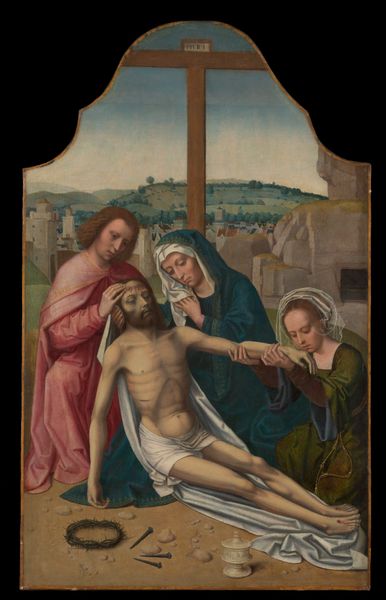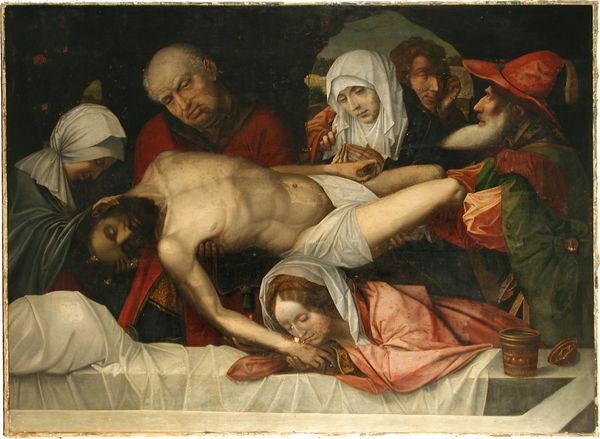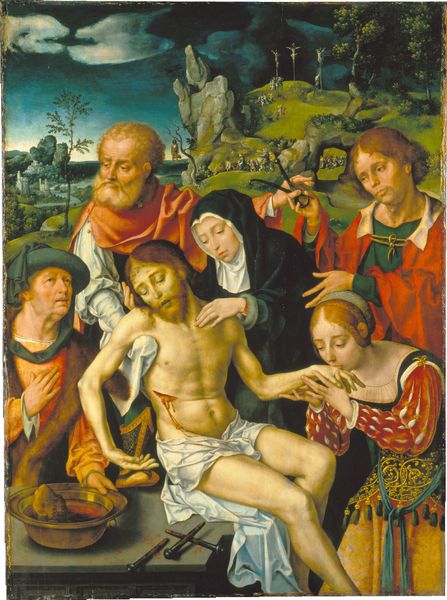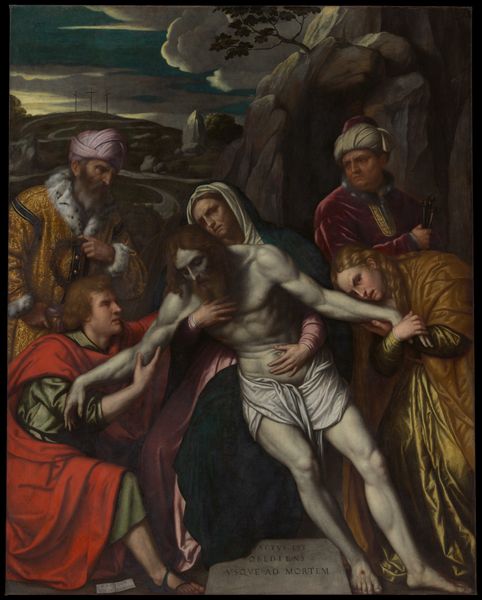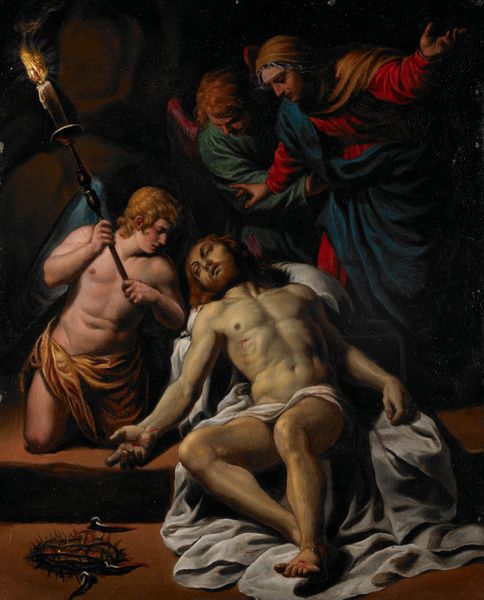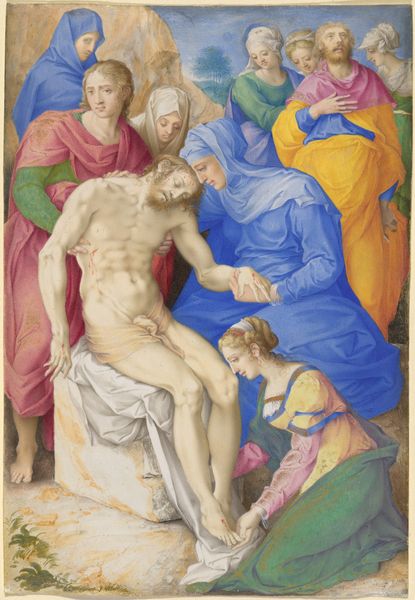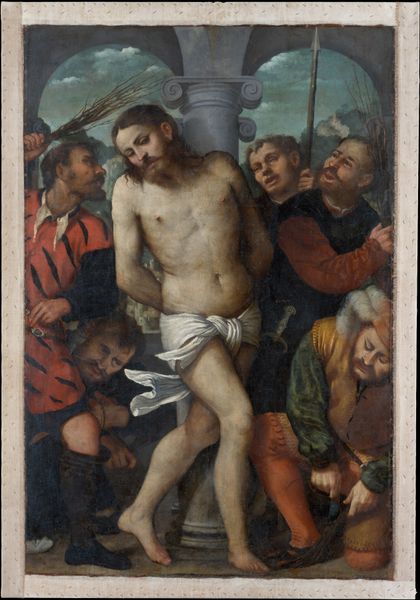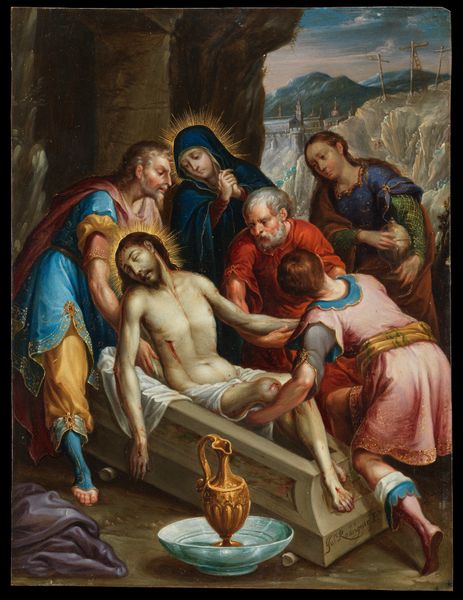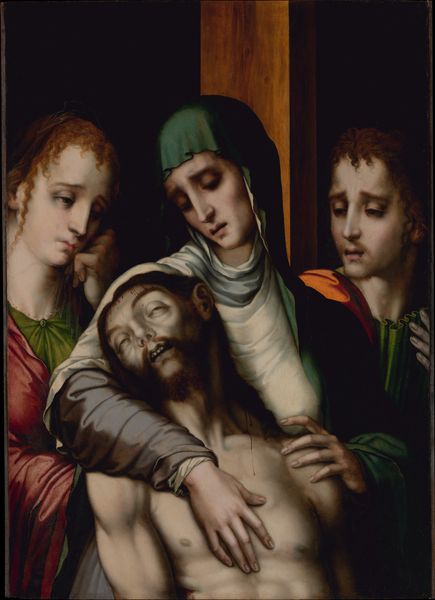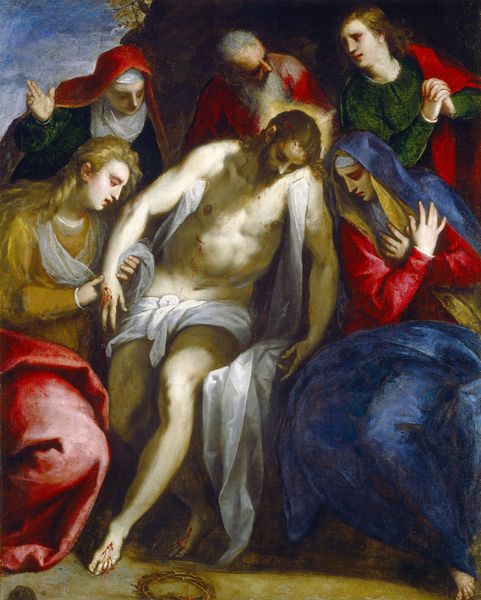
Dimensions: 114 x 68 in. (289.6 x 172.7 cm)
Copyright: Public Domain
Editor: Scipione Pulzone’s "The Lamentation," painted in 1593, is a striking oil painting now residing at the Met. I’m immediately struck by the almost unnatural smoothness of the figures, the almost porcelain-like quality of their skin. What elements stand out to you in this work? Curator: Focusing on materiality, consider the cost of pigments in 1593. Ultramarine, derived from lapis lazuli for Mary's robe, would have been astronomically expensive, a clear demonstration of wealth and devotion commissioned by the patron. And look at how that intense blue contrasts with the stark, pale body of Christ. What does that material investment signify? Editor: So, the expense speaks to status and the artist using that deliberately... How does that play into the actual craft? Curator: Precisely. Think about the labor involved in grinding those pigments, the techniques of layering the paint to achieve that smooth, almost ethereal effect. It elevates the painting beyond mere representation. There is a clear distinction and a clear attempt by the painter to communicate reverence in a visual and very material way. Note how the ladder, leaning against the cross, has an interesting position within the final work of art and would have been crafted by someone without fame. Do you consider the labour behind that of the artist differently, although both enable the work as a whole? Editor: That’s an interesting perspective. I’d not considered the labor of producing these items! Thanks for offering insight into the work, through production, class and wealth. Curator: My pleasure. Examining the social and economic dimensions behind even the most revered artworks brings us closer to understanding their true value.
Comments
No comments
Be the first to comment and join the conversation on the ultimate creative platform.
